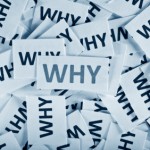 When we try to change a certain behavior that has become a bad habit or addiction, we usually go through a series of trial and error periods before we eventually find a way to successfully break free from whatever addiction we are trying to break. Of particular importance is how we define, view and deal with slips. The first thing to do then is to properly define a slip and to understand how it differs from a relapse.
When we try to change a certain behavior that has become a bad habit or addiction, we usually go through a series of trial and error periods before we eventually find a way to successfully break free from whatever addiction we are trying to break. Of particular importance is how we define, view and deal with slips. The first thing to do then is to properly define a slip and to understand how it differs from a relapse.
A relapse is defined by a return to a previous undesired behavior. It is reengaging in the habit (frequency and quantity) you have attempted to break free of. If for example you used to smoke one pack of cigarettes per day and have decided to completely stop smoking, a relapse would mean that you have returned to smoking one pack (or close to one pack) per day. A slip on the other hand can be considered to be more like a mistake or temporary setback. Using the same example, a slip would look something like someone who used to smoke one pack per day and on one particular day ends up smoking one or more cigarettes. After smoking those cigarettes the person stops and resumes being abstinent. A slip is a temporary lapse: a mistake that must be analyzed and an opportunity for growth (we will get to that a little later).
Remaining in the Maintenance phase of Prochaska’s Transtheoretical Model (TTM) of change is a dynamic process that involves many challenges and learning opportunities. It is important to know that slips are normal and part of the process of change. In fact, it is not uncommon for someone to have 7-9 slips before successfully breaking free from an addiction and remaining in the Maintenance phase.
When someone experiences a slip (or relapse), there is usually one of two ways they can react to it. In the first reaction, one might feel discouragement and remorse. These negative emotions bring on feelings of failure and might promote helplessness towards abstinence. This is generally referred to as a violation effect (VE) since the individual feels like (s)he has violated a promise to him/herself. The VE puts the individual at risk for a relapse (after a slip) or maintaining a relapse by justifying the behavior with such destructive erroneous thoughts as “I’m already dirty so…” or “It’s just too hard, I’ll never be able to quit”.
The other way to view a slip is more empowering and reduces the likelihood of maintaining a slip or relapse. After preparing and implementing a plan to achieve a goal of abstinence (or controlled consumption), experiencing a slip implies that some risk factor(s) were either forgotten or not given enough attention while in the Preparation stage of change. By analyzing the situation that led to the slip and preparing a plan to deal with such an occasion in the future, you are gaining a valuable learning experience that increases your odds of successfully modifying your behavior to rid yourself of an addiction.
The best way to deal with a slip is to view it as a normal part of the process of change and to take the time to question the events that led to the slip in order to develop a plan for dealing with similar events in the future. That way, not only do we facilitate the process of changing our behavior but we gain insight and valuable information about ourselves and of the tools we need to successfully break free from an addiction.
Another very important thing to remember is that even if a slip turns into a relapse, it is never too late to stop the undesirable behavior and take the time to learn from it.
